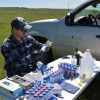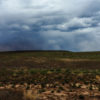One researcher examines how native plants can compete with invasives
In the spring of 2019 Elizabeth Leger drove out from her botany lab at the University of Nevada, Reno to her field site on the western edge of the 435,000 acres burned in the Martin Fire. She was looking for cheatgrass. The 2018 wildfire was the largest in Nevada’s history, and cheatgrass is frequently the first thing to grow after a fire on this landscape. But as she approached the burned area, Leger didn’t see the invasive grass. Rather she found fields of blooming native wildflowers. How did these native plants survive and thrive after fire? What suppressed the cheatgrass?
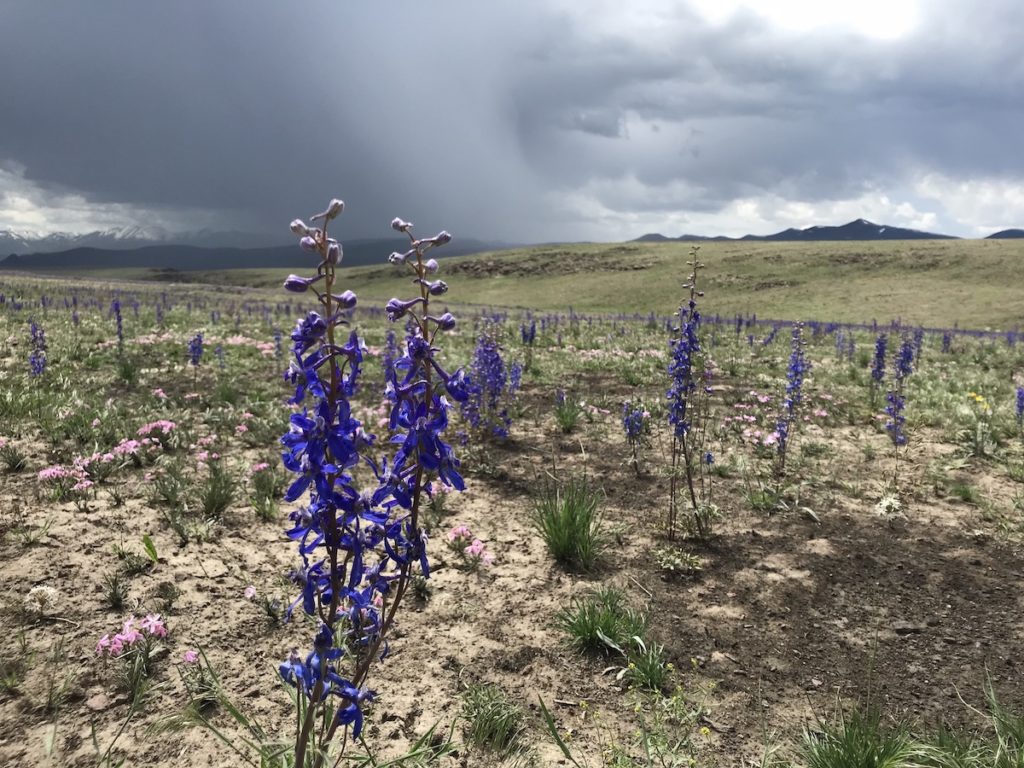
Leger studies what makes some individual plants and plant communities resistant to invasive species, like cheatgrass, and resilient after disturbance, like fire. “Resistance,” she says, “is the ability to keep the weeds out, and resilience is the ability of the community to come back to some sort of native trajectory after disturbance.” In her research, she works to identify the characteristics that enable some native plants to outcompete or recover. Her work could help managers better tailor their efforts to combat invasive species by promoting resistance and resilience in native plants.
Bring it to the classroom: access a version of this article modified to an eighth grade reading level.
A nonnative species is titled “invasive” when it degrades ecosystem productivity, reduces biodiversity, disrupts desirable ecosystem services, or drives sensitive species toward extinction. That happens when it outcompetes natives. Disturbance, such as fire, can expedite invasion. The worst invasive grasses in the West are annuals, which germinate from seed every year, while native perennials, once rooted, come back year after year. Intact sagebrush systems contain a diverse community of shrubs and perennial forbs and grasses that grow and blossom throughout the growing season. Each native species is one component of a continuous cycle of ecosystem productivity. When each of the components are present, the plant community prevents invasive weeds from taking over.
“The problem,” Leger explains, “is when you pull some of those components out, that’s when you make these windows for cheatgrass or other weeds to come in.” For example, when decades of intensive grazing and topsoil erosion removed some native species on western landscapes, cheatgrass invaded.
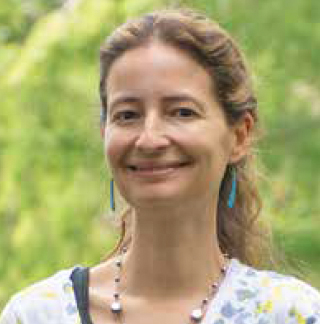
The standard approach to fighting invasive annuals has been to focus on killing them across the landscape. Land managers invest huge amounts of time, money, and herbicides on invaded landscapes, but they will never eliminate the last cheatgrass seed. At the same time, treating invasives like a cancer can have much the same result on the ecosystem as chemotherapy has on the human body, killing healthy components alongside the target. Relying on conventional solutions like herbicides to manage invasive plants also kills the native plants that have evolved to resist the invaders.
Leger is researching unconventional solutions. Her curiosity was sparked after observing a half-burned hill. On the side untouched by wildfire, native grasses and shrubs grew, while the burned side was covered in cheatgrass. Amidst the cheatgrass, a few endemic grasses persisted. Leger collected plants from both sides of the hill and began experimenting.
To identify characteristics of plants capable of competing with cheatgrass, she first plants cheatgrass in experimental plots containing different compositions of native plant communities and then weighs the biomass of the cheatgrass produced in a season. Thus, her metric to assess resistance is to gauge the effect of the native plants on the productivity of the invader. Natives are more resistant when cheatgrass produces smaller plants and fewer seeds.
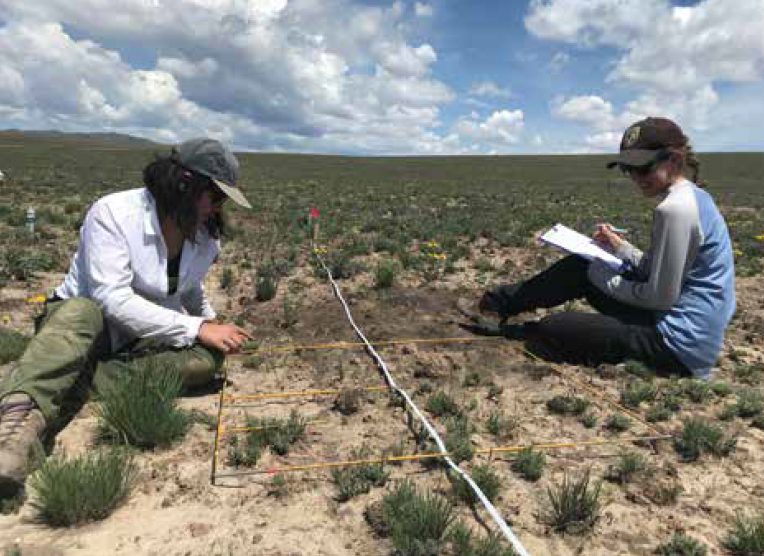
To understand the characteristics of individual native plants surviving in invaded areas, Leger can be found at her field sites and greenhouses measuring plants and excavating root systems. She has found, for established perennials, the best strategy is to green up really early—the minute it starts raining—and put a lot of energy into roots. “Below ground,” she says, “that’s where all the fighting is in the Great Basin.” Her most interesting finding in native seed establishment is, “The plants that survive best are the ones that are small overall.” The theory is, plants that require less water and fewer resources have a better chance of surviving in a high competition situation.
Leger’s research is informing new management strategies. Whereas seed producers generally select for bigger plants, Leger’s work shows that plants that are small, green up early, and produce a lot of below ground biomass are more resistant to invasion. By selecting seeds with these characteristics, managers may get a leg up on cheatgrass. Furthermore, based on the increased understanding about the importance of a diverse, intact native plant community, some managers in sagebrush are seeding native perennials in advance of fire in an effort to restore the ecosystem from historic disturbance such as overgrazing. Leger is also assessing the potential for high-density, short term cattle grazing to mow down the annual grasses, thus opening space for native perennials to establish.
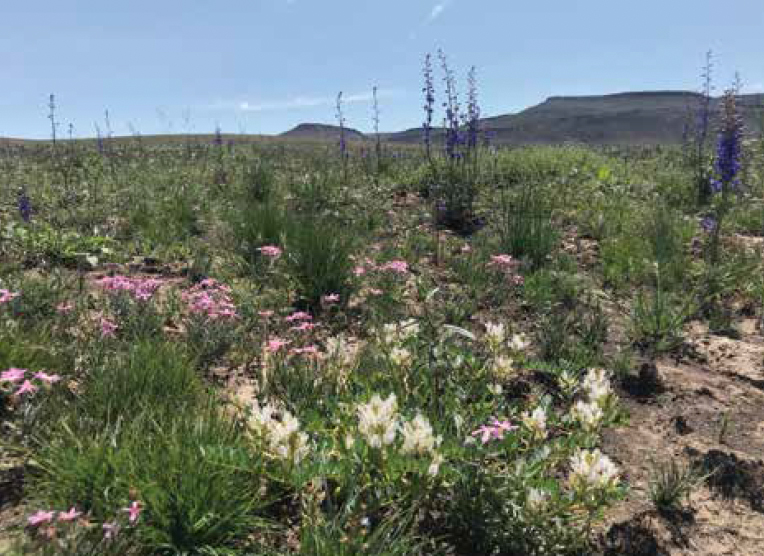
There is no silver bullet solution, Leger emphasizes. No one strategy will work in every place or every year but seeding diverse species with a variety of characteristics and growth strategies may support a stronger and more resilient ecosystem. Restoration seeding efforts are ongoing at select sites among the 435,000 acres burned in the Martin Fire. The spring of 2019 was particularly wet, which helped endemic perennials thrive on the western edge of the burn, and only time will tell how the landscape is rebounding. Leger will return each season to monitor the plant communities, searching for clues to inform wiser management approaches to fighting invasives.
By Tessa Wittman
Tessa Wittman is a senior in environment and natural resources and wildlife and fisheries biology and management at the University of Wyoming and a 2019 Udall Scholar.

